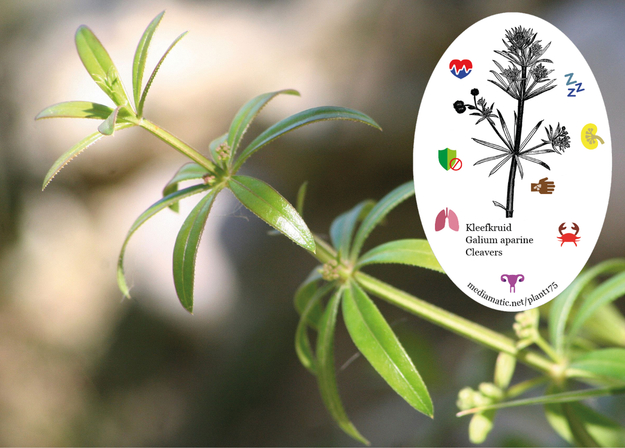Goosegrass has a long history of domestic medicinal use and is also used widely by modern herbalists. A valuable diuretic, it is often taken to treat skin problems such as seborrhoea, eczema and psoriasis, and as a general detoxifying agent in serious illnesses such as cancer. The whole plant, excluding the root, is alterative, antiphlogistic, aperient, astringent, depurative, diaphoretic, diuretic, febrifuge, tonic and vulnerary. It is harvested in May and June as it comes into flower and can be used fresh or dried for later use. It is used both internally and externally in the treatment of a wide range of ailments, including as a poultice for wounds, ulcers and many other skin problems, and as a decoction for insomnia and cases where a strong diuretic is beneficial. It has been shown of benefit in the treatment of glandular fever, ME, tonsillitis, hepatitis, cystitis etc. The plant is often used as part of a spring tonic drink with other herbs. A tea made from the plant has traditionally been used internally and externally in the treatment of cancer. One report says that it is better to use a juice of the plant rather than a tea. The effectiveness of this treatment has never been proved or disproved. Both Asperuloside (a terpenoid) and Coumarin (a benzopyrone) occur in some species of Galium. Asperuloside can be converted into prostaglandins (hormone-like compounds that stimulate the uterus and affect blood vessels), making the genus of great interest to the pharmaceutical industry. A homeopathic remedy has been made from the plant. Source: https://pfaf.org/
Goosegrass / Cleavers
Galium aparine
Find more about this plant on Wikipedia.
